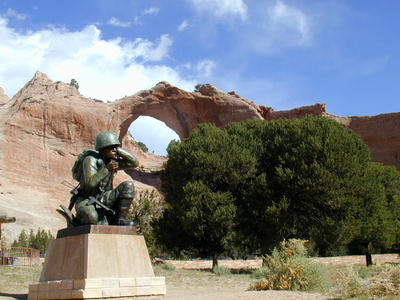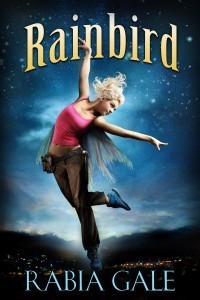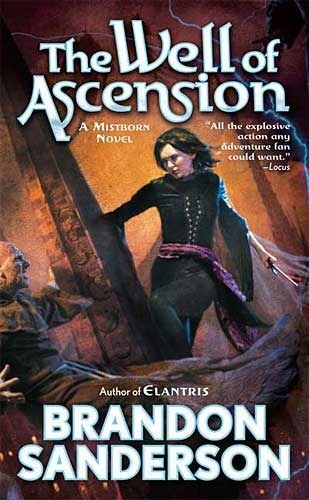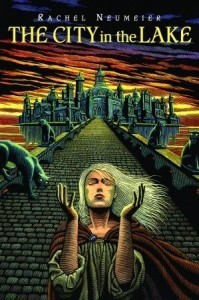Rabia Gale's Blog, page 18
October 17, 2012
threats from outer space
Those of us who read and write fantasy and science fiction like our conflicts on a large scale. Forget about family feuds and bickering neighbors–we like wars that engulf whole continents, Dark Lords that threaten to drain the life force of the entire world, and weapons that can take out entire planets.
And since I like to spice my fantasy with a dash of science fiction, I am always interested in world-destroying, humanity-menacing threats from outer space and the many forms they can take.
An Alien Invasion
This is the classic threat, really. From H. G. Wells’ War of the Worlds onward, aliens have invaded our TV screens and our pleasure reading for decades. V: The Final Conflict was one of my favorite sci-fi TV shows as a teen. In movies like Independence Day, Signs, and Titan A.E. and books such as Ender’s Game and The Kraken Wakes, aliens are bent on taking over Earth and destroying or subjecting humanity.

And you thought this was a book about sea monsters…
The Thread in Anne McCaffrey’s Pern books is an interesting variation on the alien invasion trope. Thread is biological, but not sentient, a mindless parasite that consumes everything organic
And then there are stories like Avatar, where the alien invaders are–us.
Meteor Strike
We all know how bad a meteor strike can be–just ask the dinosaurs.
*crickets chirping*
K, so we can’t ask the dinosaurs, but while Earth may survive a big strike by a meteor or comet, humans may not. This is the scenario in the movies Deep Impact and Armageddon (neither of which I have seen, by the way–these are husband-provided examples).
Or, you can combine the alien invasion and the meteor strike and get something like Terry Pratchett’s The Fifth Elephant: Giant elephant slams into the Discworld in the dim, dark past, creating vast deposits of fat.

Megatons of screaming, angry elephant bearing down on the world? Now that’s a frightening thought.
Strange Space Phenomenon
You don’t need to physically harm Earth in order to throw our civilization into chaos.
In John Wyndham’s Day of the Triffids, a shooting star show blinds everyone who sees it. Chaos ensues.
In Blake Crouch’s Run, everyone who witnesses an aurora is suddenly gripped by an uncontrollable homicidal urge to kill everyone who didn’t. Chaos ensues.
In our very real life, scientists warn us that a solar flare could disrupt our technology. Chaos will ensue.
The Vogon Construction Fleet
Yes, this deserves its own category. In Douglas Adams’ Hitchhiker’s Guide to the Galaxy, Earth is destroyed in order to make way for an interstellar bypass.
It’s nothing personal.
Miscellaneous Space Threats
Besides these categories, there are threats by black hole, rogue planets smashing into our own, the inevitable expansion of the sun at the end of its life, and the ripping of the space-time fabric. All of which make the hearts of apocalypse rubber-neckers like me go pitter-patter.
What other threats from outer space–real and imaginary–can you think of?

October 15, 2012
Rainbird is out!
She’s a halfbreed in hiding.
Rainbird never belonged. To one race, she’s chattel. To the other, she’s an abomination that should never have existed.
She lives on the sunway.
High above the ground, Rainbird is safe, as long as she does her job, keeps her head down, and never ever draws attention to herself.
But one act of sabotage is about to change everything.
For Rainbird. And for her world.
Rainbird is a fantasy novella of about 31,000 words.
Now available at Amazon US | Amazon UK | Barnes & Noble | Smashwords

October 12, 2012
back to school for writers roundup
In case you missed any of the posts in my Back to School for Writers blog series, here they are again:
Liv Rancourt on childbirth
David Gale on computers
Tami Clayton on mental health therapists
Liana Mir on insurance companies
Veronica Valli on addiction and recovery
Lisa Lawler on the Celts
Jodi Lea Stewart on the Navajo Code Talkers
Many thanks to my wonderful guest bloggers for making the series a success!

October 11, 2012
Rainbird, excerpt 2
Rainbird never belonged. To one race, she’s chattel. To the other, she’s an abomination that should never have existed.
She lives on the sunway.
High above the ground, Rainbird is safe, as long as she does her job, keeps her head down, and never ever draws attention to herself.
But one act of sabotage is about to change everything.
For Rainbird. And for her world.
Excerpt
Click here for the first excerpt.
Rainbird rubbed at her eyes, gritty with lack of sleep. The Company did not like sunway tremors. They had already delayed sunrise and roused the inspectors out of their eggs, tucked warmly in the discs between the spine segments, to inspect every foot of track on the underside of the sunway.
Static shrilled from her radio, resolved into Petrus’ voice. “You there yet, Grit?”
That was her cover name. “Yeah,” she growled back. They kept their radio communications terse and on topic. Anyone could be listening.
“Get the equipment ready. I’ll be there soon.” Petrus’ voice was tight with tiredness and the need to keep from coughing. He clicked off before she could respond.
He shouldn’t be out here. Stupid sunway tremors!
He’d told her to wait. He expected her to wait.
I’ve been doing this for years by myself! And the sooner we finish, the sooner we can go home. He can go home.
Rainbird shed her coat and kicked it aside, up against one of the spines that marched in a row along the top side, the nightside, of the sunway. She wore thick pants reinforced with leather panels and a halter top which left her powerful shoulders and arms bare and her wings free. They rose from her shoulders in thin, diaphanous layers, and hung raggedly to her knees. A true eiree was light and strong enough to fly, but a halfbreed—even had her wings been whole, and with her strength and acrobatic skill—could not.
However.
Rainbird pulled the harness over her head and settled it against her shoulders and back. She cinched the straps tight around her waist and twitched her wings to make sure they were unconfined. Twisted poly ropes clipped onto the harness, their other ends secured to rings embedded deep in the bone.
She stood at the edge of the sunway where it curved down, and stared at the darkened land. Faint pinpricks of light came from some town below. The darker roads and rivers ran like uncoiling ribbons. Far beyond her sight, the sunway sloped down to a shattered tail in a canyon on one side and a skull buried in a swamp on the other. Crumbling high cliffs and shattered stone mountains ringed the crater the dragon had made on its impact.
Rainbird turned her back, looked out at the gritty cream bonescape instead. She was half off the edge.
She jumped.
Most inspectors did not jump. Most inspectors scuttled down, paying out the rope, boots scuffing against bone, edging their way to the track on the underside, the sunside.
None of the other inspectors had wings. None of them had a drop of eiree blood. None of them wanted to fly.
Freefalling in the cold, plunging into darkness. Wind roared in Rainbird’s ears, pierced her soft downy skin and plunged into her light hollow bones. Her tattered wings streamed behind her. She relished the way her skin prickled as the icy air rolled over it, the way every sense was sharpened, the way everything took on clarity and brightness. A knot of excitement and panic in her stomach wriggled, like a nest of snakes.
This was what it meant to be truly alive.
The end of the tether jerked her back to her duties. She’d been bracing for it, and she brought her feet up in time to meet the sunway. Smack, smack, several times, swinging back and forth until she’d managed to slow herself down enough to reach for the hand and footholds sunk into the bone.
One of these days, Petrus often said, she’d crack her skull doing this.
Since today was not that day, Rainbird unwound yet another rope from her waist and clipped another safety line to a ring. She went down swiftly, till she reached the metal track that ran all along the underside of the sunway. It was made of a virtually indestructible alloy of iron and serpentium, nearly as invulnerable as the bone itself. Even at this high altitude, subject to the fierce heat of the Day Sun as it glided across the track and the bitter cold of the night, the alloy held its shape remarkably. But not so well that she was out of a job.
Or more accurately, her father was out of a job.
Their occupation was not exciting, unlike the glamour and theatrics of the circus that had been her first home. Once she’d danced on the high wire and hung on the trapeze, her vestigial wings sparkling with glitter, disguised as a costume. Now, she tested rivets and crossbars, welded together tertiary supports of inferior alloys with a blowtorch, lubricated the insides of the track with gallons of oil.
Having to do all of this virtually upside down, several markers above the earth, just added a touch of spice to the whole endeavor. Luckily, she was not slowed down by thick gloves or a tank of supplemental oxygen.
Rainbird unclipped the safety lines from her harness and belt, and left them dangling. She wrenched open a small door in the giant track, then wrestled it shut behind her. Beyond the small space was another door. Rainbird waited for the pressure to re-equalize before opening it. She squeezed in through the small space and dropped onto a wire-mesh floor.
The air was sharp with lubricant, sooty with the recent application of a blowtorch. Underneath it all was the musty, organic scent of ancient bone, radiating heat and thrumming with electricity. Far above Rainbird’s head, above the metal framework of the track, strung through holes in the bone segments was what remained of the continent-sized dragon’s spinal cord, co-opted now to run messages and electricity throughout the sunway.
Did any of the creature’s thoughts, reflexes, or instincts still remain in those nerves? She’d heard of experiments with frog legs; some speculated that those same electric currents were responsible for the tremors, activating ancient muscular tissue that had survived both time and the humans.
Rainbird shivered at the idea, and turned her attention to the track. She made sure that a thick film of lubricant covered all surfaces in contact with the Day Sun as it glided through, and zealously banged on supports to ascertain their soundness. She carefully checked the places where metal embedded into bone, looking for any distortion or cracking.
Petrus Gallavant had never had an X on his record for negligence of duty. His daughter was not going to ruin that for him.
Rainbird climbed up the inner walls of the track, scooting from ladder to ladder in her quest for weakness. A pungent whiff stopped her.
Sunmoss! Rainbird grinned. Her day had already gotten better, maybe enough to make up for last night’s encounter with the eiree and the summons from Headquarters that had taken Petrus from his sickbed. There it was, a yellow-gold mass, tucked in a corner, rooted in the bone. The thermosynthetic moss thrived in the heat that the track captured during the Day Sun’s passage. It was rare to find some growing naturally, but it would fetch a good price in the Up-High Market on Third Rib.
It was tricky getting to the sunmoss, tucked away as it was in the bone, away from the scaffolding built around it. Rainbird crawled onto the edge of a metal limb, stood up and reached. She had just enough give to scrape off some of that precious stuff, the feathery golden moss flaking into her hand.
Along with something else entirely, something grey and speckled, like dandruff, spiraling down in motes.
Bonerot.
Rainbird stared at the evidence in her hand, breath squeezed out of her. Then she grabbed her pencil flashlight and shone it into the corner.
“Great Glew!” The exclamation, part panic, part awe, came out of her unbidden, from the wellspring of racial memory.
Bonerot, great peeling sheets of it, coated the inside of the cavity, rolling away out of her sight. The places where supports were sunk into the bone were spongy-looking and deformed.
Rainbird had never seen anything like it, never even heard of an infestation so bad.
All the best alloys in the world wouldn’t keep the Day Sun up if the dragon skeleton itself were to collapse. There was no sunway without the bone.
And if there was no sunway, then there would be no sun. Only darkness and cold for the humans huddled beneath the dragon’s spine.
I uploaded Rainbird to various e-tailers last night. The official blog announcement is coming soon!

October 3, 2012
out of The Shallows and on to the beach: thoughts and prescriptions
This is not an Internet-bashing post. My Internet usage may be affecting my life in ways I find disturbing, but it also has many great benefits. All of my writing friends are online. I regularly encounter blogs, articles, images, videos and podcasts that inform, entertain and inspire me. And it’s the Internet that makes it even possible for me to have a career self-publishing ebooks.
With that out of the way, here’s my response to Nicholas Carr’s The Shallows: What the Internet Is Doing to Our Brains.

Two Points
There are two points that Carr makes in his book that struck home for me.
1. The Internet is rewiring our brains for quick thinking, not deep thinking. Our adult brains are still very plastic. The things we do rewire our brains. According to Carr, Internet usage overloads our working memory, distracts us with the allure of the new and immediate, and interrupts the work of thinking.
2. When we outsource our memory to the Internet, we diminish the richness of our own intellectual lives. Carr points out that human memory is not a mere data storage and retrieval system. Memorization is no rote process, but one of synthesis and creativity. Memory is “as much a crucible as a container. It … [is] more than the sum of things remembered. It … [is] something newly made, the essence of a unique self.”
Tools, Carr explains, end up numbing the part of the body they amplify. The map diminished the ability of the brain to remember a landscape in rich detail. The clock separated us from the natural rhythms of life. So, too, does reliance on the Internet come with a cost.
What This Means to Me
As a creative individual, both of these points worry me.
I know this about my creative process: I need time and space and silence in which to think.
I grew up before the Internet had a stranglehold on our daily lives, so I remember well afternoons spent just dreaming and thinking. I continually draw from the store of imagery I built up as a child. Phrases and fancies from those golden days still find their way into my fiction. And I worry because my adult life is so busy and distracted that I don’t have time to replenish the well in the same way.
I don’t have–no, I don’t give–myself time to think deeply.
I also know how closely related memory is to the creative process. Memory encompasses not only facts, but sensory details and emotions. It’s the synthesis of what we know that gives us fresh stories. And if I’m all over the Internet, tweeting here and blogging there and buying curricula while listening to a podcast, then I am overloading my poor brain. I’m not giving it time to consolidate long-term memories which would enrich my creative and intellectual life.
Now What? The Plan
So. Now I know the problem. What are the solutions?
1. Regular Internet Hiatuses
I have this sense that if I’m offline for long, I’ll lose my friends, hemorrhage my blog followers and sink my sales. That may happen, but I know that for long-term productivity I need to get offline. Internet hiatuses can span hours–like a tech-free evening at home–to days. The world will still go on while I’m gone.
2. Journaling
I’m a journaling dropout. I aim to rectify this by keeping two journals–one a personal journal in which I write whatever I want, and the other a reading journal, sort of like a commonplace book.
3. Intentional Reading
I have two lists of books I want to read: one fiction and one non-fiction. The fiction book list is based off NPR’s list of Top 100 Science Fiction & Fantasy books. The non-fiction list includes books on history, theology, science, and biographies. I’m still building that one, so if you have a recommendation, let me know!
4. A Hobby That Does Not Involve Computers
In the past I’ve sketched, crocheted, played piano, and embroidered. These days I doodle. Easy to pick up, easy to put down, and nigh-on impossible to do wrong.
Your Turn
Do you have any bad habits that you want to replace with positive ones? Any changes you want to make in your lives? How are you going about it?

October 1, 2012
book cover monday: strong females
The problematic portrayal of women on book covers has been rehashed on the Internet many times. Warrior women end up in skimpy clothing and contorted poses that would crack the spine of any normal person. In YA fiction, there is a disturbing trend of drowning or dead-looking girls in flowing dresses. Individually, many of these covers are striking or beautiful; taken together they depict women and girls *only* as sexual objects or as weak and helpless.
Those aren’t the covers I want to talk about today.
Instead, I want to focus on book covers that DO portray females as strong and dynamic and fully immersed in their stories (I dislike covers on which the female is putting on a come-hither look for the reader. Unless this fits the protagonist’s personality–and most often it doesn’t–I don’t want to see it).
If you’ve been following Book Cover Monday for a while, you’ve seen my all-time favorite cover with a strong female protagonist before.
Notice that Vin is dressed appropriately, that she is fully engaged in the scene, she is in motion *and* she is dominating this fight. No resorting to cheap tricks like chainmail bikini or contorted poses or sultry glances to portray Vin as strong and attractive.
Natural pose and looks like she’s wearing the right kind of clothing for the period and her situation (I’m no expert on Elizabethan costume but it doesn’t jump out as horribly wrong to me). She’s guarded and alert, and again, her eyes are focused not on the reader but within her world. Oh, and she has a gun and she’s not afraid to use it. 
Came across this one recently. A woman who knows how to take care of herself, dressed in sensible traveling clothes, *with* children. Female protagonists with children are so rare in fantasy that I danced a little in glee when I saw this cover. This woman totally has the baby-carrying thing down. Look at her eyes. Don’t mess with this mama.
Love the expectant stillness of the pose. All the swirling black cloth and the veiled eyes only heighten the mystery and danger of this protagonist.
*gasp* A girl on a YA cover who is NOT wearing a dress. Love how casually comfortable she is with that sharp shiny scythe.
Any other covers that you think portray strong women and girls? I’d especially love to see some that depict strength without weapons–hard to do, I know, in fantasy. Let me know in the comments!

September 28, 2012
Rainbird excerpt
Rainbird never belonged. To one race, she’s chattel. To the other, she’s an abomination that should never have existed.
She lives on the sunway.
High above the ground, Rainbird is safe, as long as she does her job, keeps her head down, and never ever draws attention to herself.
But one act of sabotage is about to change everything.
For Rainbird. And for her world.
Excerpt
Rainbird danced on the sunway to the singing of uncountable stars, music that only she could hear. Her trench coat, too large and shabby, smelling of cigar smoke and mothballs, flapped around her. Under the thick thirdhand fabric, her wings whispered, satin-starch-slither. Her long-toed bare feet skimmed the bumpy bone of the sunway, worn smooth and glittering by centuries of inspection. Her oversized lungs pulled in the thin cold air.
Rainbird rose up on her toes, spun, leapt high and proud like a horse, and landed perfectly. She dipped her head and knees in a curtsey to her celestial audience. Then she kissed her hand to Glew, the dim, faraway true sun of the purebred eiree. It glowered with sour malice, rheumy-eyed even this far above the clouds and the smoke, the haze and the lights of the cities of men.
Her gesture was theatrical, less a reverence and more a flirtation, though not entirely without affection. Glew had witnessed her solitary dances for two years, since she had first come up on the sunway. It and the other stars had replaced the human audience that had gaped and cheered during her performances in the circus she’d grown up in.
No, she’d been drawn to the stars, both the fixed and the wandering, even before she’d escaped to the sunway. She’d watched them from downside, in the Deeps of the night, perched atop the circus tent, above a sawdust floor covered in trampled-on confetti, empty paper packets, and the sequins and flowers that had fallen unnoticed, like dandruff, from the performers’ costumes.
She had not danced, then, only listened to the stars’ music. Now, she closed her eyes, twirled, and lifted her arms up, as if to embrace them.
“Never draw the attention of the stars.” The voice was as cold and as quiet as snowflakes. “For you will only live to regret it.”
Rainbird’s eyes snapped open. She spun, looking wildly about her, but there was no one next to her, no one on the vast expanse of ivory bone all around her. Then she looked up, into the air, and made out a shadow upon the cable that stretched overhead. An eiree wire, made as a rest stop for the winged race, a sop from the humans for bundling the eiree off the dragon spine that formed the sunway and onto the skeletal remnants of the creature’s wings. She had never seen an eiree upon one before.
Until now.
Rainbird kept still, tense and wary, not speaking. Maybe the eiree would not know her, would not know that she was the half-breed. Her wings were hidden and…
“I have watched you, little worm.” Contempt would’ve been better than the disinterested coldness which dripped into Rainbird’s bones. “You do not know that which you meddle with.”
So he knew her, did he? He watched her, did he? Well, let him see this.
With a toss of her head, a flick of her wrist, a spinning kick, Rainbird banished the eiree prohibition. She was not eiree, had never been recognized by them as such, didn’t want to be claimed as one of them, and she would not live by their rules.
She owed them nothing.
A reckless anger burned through her blood. She knew that Petrus would want her to say nothing, do nothing, but all caution was swept away by that hot tide.
“See here!” Rainbird called up to the stars, singling out her favorite, a wanderer with a reddish tinge. She didn’t care if the eiree saw her. She hoped he did. “Watch!”
She gave that star her most daring leaps and her most artistic turns as the celestial chorus rose to a crescendo. Let the eiree break law and attack her on the sunway for her defiance. Let the stars be unimpressed as they always were. That only spurred her on to more impudent and far-reaching feats.
But at the highest point of her leap, the reddish star looked at her.
Looked. At her.
Rainbird touched down, stumbling, shaken. But no, it was not her balance at fault—the sunway itself shuddered. A tremor. They’d become common enough this past year, but never at night when the Day Sun was down.
A whisper brushed across her ears, “… am… coming.”
Papa! Guiltily, Rainbird reached for her radio, her one concession to Petrus’ caution. But no, it hissed quietly to itself, channeling nothing but static. Bone quivered under her feet again, as if the massive beast whose spine she stood upon stirred in restless sleep.
“No,” she said, out loud. “No. The dragon’s been dead for centuries, before humans even came to this world.”
Then she looked up quickly, half-expecting the eiree to say something cryptic and disturbing, as was the wont of his kind. But there was no one on the wire.
She was alone again.
Hope you enjoyed this excerpt! Rainbird will be out in mid-October.

September 26, 2012
back to school for writers: Jodi Lea Stewart on the Navajo Code Talkers
Welcome to the LAST post in the Back to School for Writers blog series. Today’s guest is Jodi Lea Stewart, telling us why she’s proud of the Navajo Code Talkers. Read on for a fascinating glimpse into history.

Window Rock, Arizona/Navajo Nation: Fotolia
Recipe for Military Success
Twenty-nine brave and brilliant Navajo men fluent in both English and Navajo willing to join the Marine Corp
One extremely difficult Athabaskan language, not yet written
Major war
Seven hundred phonetically created and memorized code words
Mix all ingredients, then add:
Four hundred more willing Navajos to become Marine Code Talkers
Turn mixture out into well-seasoned platoons and…
Bake in the jungles of Guadalcanal.
Simmer in the black sands of Iwo Jima.
Spread into every major engagement of the Pacific theater from 1942-1945
Re-use all ingredients later in Korea and Vietnam.
The above “recipe” produced the world’s first and only indecipherable code and a group of heroes who were the military’s best-kept secret until 2001.

Navajo Enlistment Letter
Major Howard Conner, fifth Marine Division signal officer said that were it not for the Navajo Code Talkers, the Marines would never have taken Iwo Jima. According to the Navajo Code Talkers World War II Fact Sheet, six Navajos were in Iwo Jima working around the clock non-stop for the first two days of the battle. They sent and received over 800 messages, ALL WITHOUT ERROR!
Where did these outstanding Code Talker candidates come from?
The Rez! Government-run boarding schools were set up in the 1890s to assimilate Native Americans into American culture. The children were stolen participated by leaving their families at the age of five or six years old. They didn’t return until after graduation. The schools were run with rock-hard rules similar to an adult military boot camp.
From these prisons schools, came the Navajo Code Talkers, the only men in all of history to create a code so magnificently ironclad that the best code crackers in the world couldn’t touch it. It makes me want to scream, it’s so cool!!
The recruits had to meet age, weight, health and language requirements, and went through the standard Marine boot-camp training. It is said that drill instructors and other recruits were in awe of the physical endurance of the Navajo men. After boot camp, the initial group of Navajo Code Talkers were charged with creating 211 military terms. The codes were memorized and never written down. Before it was over, the secret code words numbered more than 700, thus marking the end of constant interception and sabotage of US. military communications from our enemies.
Exactly how the code was conceived and implemented is nothing short of breathtaking.
Are you getting it why I’m so proud of the Navajos?
The code itself was declassified in 1968, but the Code Talkers were still under wraps until 2001. Some of the Code Talker’s own families had no concept of how their relative had served in the wars in which they participated.
In 2001, the Navajo Code Talkers were honored and recognized by this country as heroes. President George Bush awarded Congressional Gold Medals to the original twenty-nine code talkers. Of the original twenty-nine, only five were alive, and four were able to travel to Washington D.C. to receive their medal. Later, in Window Rock, Arizona – the capitol of the Navajo Nation – silver medals were bestowed upon the other men who later qualified as Navajo Code Talkers. Because recognition was so slow to come, most of the medals were handed off to survivors.
On a smaller but not lesser scale, members of the Sioux, Choctaw, Comanche and Mohawk tribes also used their native languages as a code during World War II for the Army. (If I left any tribes out, I apologize. Contact me, and I’ll be more than happy to add them to this list.)
It is stunning and sad to realize that the Native American men (and women) who sacrificed everything to serve their country in World War II, the Korean War and the Vietnam War were not allowed to vote in US elections until:
Arizona – 1948 *three years after the end of World War II*
New Mexico – 1953 *After the end of the Korean War*
Utah – 1957 *After Native Americans had served in World War II and the Korean War*
On the Official Website of the Navajo Code Talkers , it says: They were a small band of warriors who created an unbreakable code from the ancient language of their people and changed the course of modern history.
That gives me goose bumps. I’ve studied the Navajo people enough to know that the sacrifice those young men made to the war effort is incalculable, and that it goes far beyond serving a stint in the US military.
Navajo Code Talkers…we salute you!
Diné – what the Navajos call themselves. It means the people.
Diné Bizaad – the native language of the Navajo.
In Code Talker language:
Hitler was: He Who Smells His Mustache.
Mussolini was: Gourd Chin.
Pretty creative, right?
In case you want to read about the Code Talkers on Wikipedia in their own words and language, please be my guest, and good luck!
What about you? Did you already know about the Navajo Code Talkers, or is this something you’ve never heard of? If you are familiar with the real Code Talkers and their contribution to US history, do you think the movie Wind Walkers with Nicholas Cage exemplified them properly? I lean toward no. What do you think about that? We’d all love to hear!
About Jodi
 Jodi Lea Stewart was born in Texas and grew up in Apache County on a cattle ranch near Concho, Arizona. She left the University of Arizona in Tucson to move to San Francisco, where she learned about peace, love, and exactly what she didn’t want to do with her life. Since then, Jodi graduated summa cum laude with a BS in Business Management from Letourneau University, raised two children, worked as an electro-mechanical drafter, penned humor columns for a college periodical, wrote regional western articles and served as managing editor of a Fortune 500 company newsletter. She currently lives in Texas and Arizona with her husband, two Standard poodles, two rescue cats and numerous gigantic, bossy houseplants. Silki, the Girl of Many Scarves: SUMMER OF THE ANCIENT is her first novel. Her next book in the series, CANYON OF DOOM, will be out in early 2013.
Jodi Lea Stewart was born in Texas and grew up in Apache County on a cattle ranch near Concho, Arizona. She left the University of Arizona in Tucson to move to San Francisco, where she learned about peace, love, and exactly what she didn’t want to do with her life. Since then, Jodi graduated summa cum laude with a BS in Business Management from Letourneau University, raised two children, worked as an electro-mechanical drafter, penned humor columns for a college periodical, wrote regional western articles and served as managing editor of a Fortune 500 company newsletter. She currently lives in Texas and Arizona with her husband, two Standard poodles, two rescue cats and numerous gigantic, bossy houseplants. Silki, the Girl of Many Scarves: SUMMER OF THE ANCIENT is her first novel. Her next book in the series, CANYON OF DOOM, will be out in early 2013.
Visit her online at http://jodileastewartblog.com/.

September 24, 2012
7 favorite books of 2012
A while ago I was given the Very Inspiring Blogger Award by Ellen Gregory and Tami Clayton–thank you, ladies! I’m supposed to share seven facts about myself but, like Ellen and Tami, I’m going to talk about books instead. Here, in no particular order, are my 7 favorite reads of the year so far.
1. Goblin Moon by Teresa Edgerton
Goblins, alchemy, and strange rituals abound in this seventeenth-century-inspired fantasy. Reissued by the author in e-format for a steal, this adventure features a dashing Scarlet Pimpernel and a practical young lady determined to save her cousin from a nasty plot.
2. Dark Life by Kat Falls
I usually find post-global warming settings far too grim to enjoy, but Kat Falls has created a fascinating world in which humans live in underwater settlements. This YA novel is a great adventure from start to finish–and the sequel is out, too!
3. The City in the Lake by Rachel Neumeier
Fairy tale-like story. Magical world. Lovely prose. An independent heroine and a deep, quiet romance. I’m a sucker for all these.
4. The Serpent Sea by Martha Wells
The sequel to The Cloud Roads shows Moon growing into his role as Jade’s consort as his clan returns to their ancestral home. Loved it.
5. Girl in the Arena by Lise Haines
This compelling story turned out to nothing like I expected: not quite alternate history or dystopia, not quite fantasy or contemporary YA. The book focuses more on family dynamics and societal commentary than on romance and revenge. In spite of a huge plot issue in the last third, I devoured it.
6. Herb Witch by Elizabeth McCoy
A well-written romantic fantasy, with a potions-based magical system, political intrigue and a courtship of convenience.
7. The Shallows: What the Internet is Doing to Our Brains by Nicholas Carr
This book indirectly prompted my post on what the Internet is doing to my brain. A thought-provoking read. More on this topic in future posts.
And since I’ve already broken the rules for this award (I’m such a rebel), I’ll go ahead and break some more. If you want to play, post your seven favorite books of the year so far either on your blog or in the comments. Share the love!
















